Two Railroad Rosters
123







123
Re: Two Railroad Rosters 1886 Pages 50-54
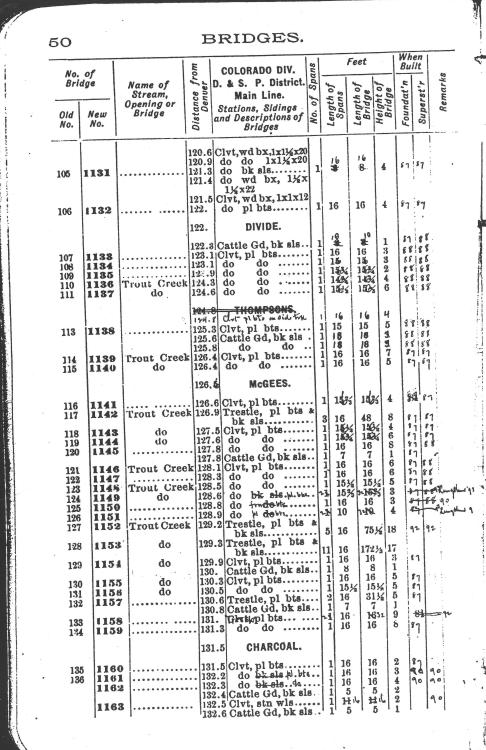 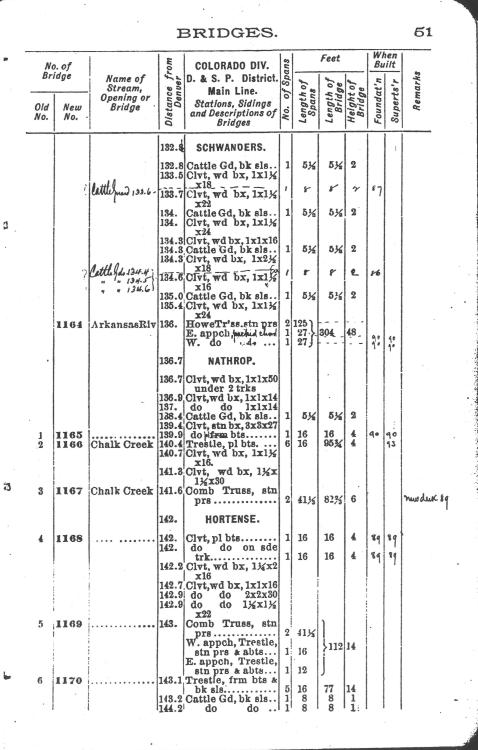 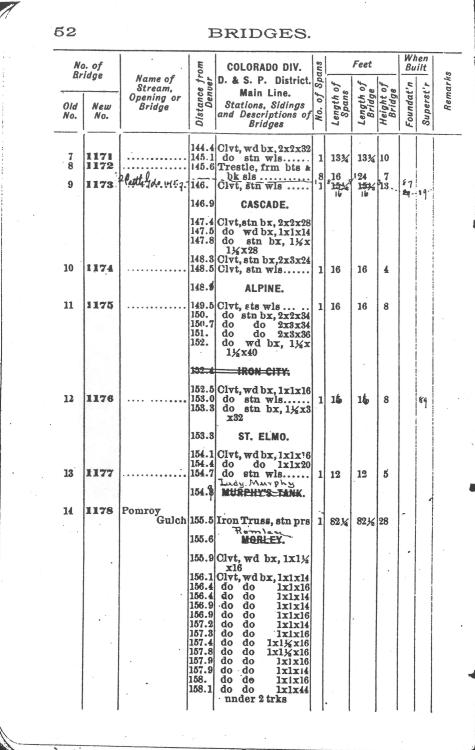 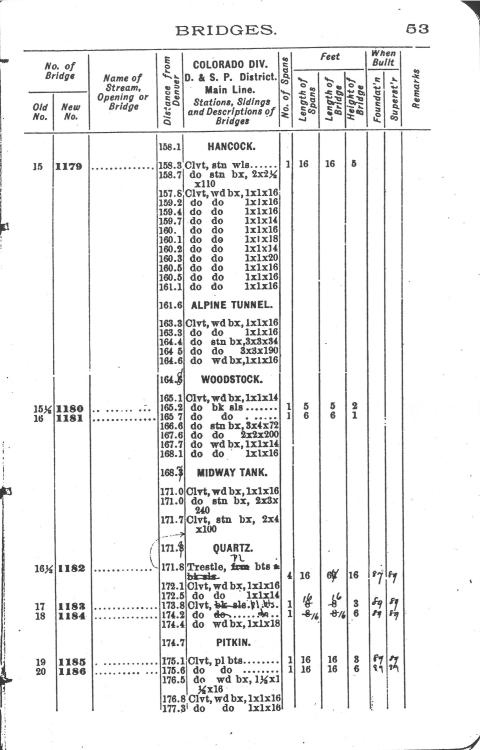 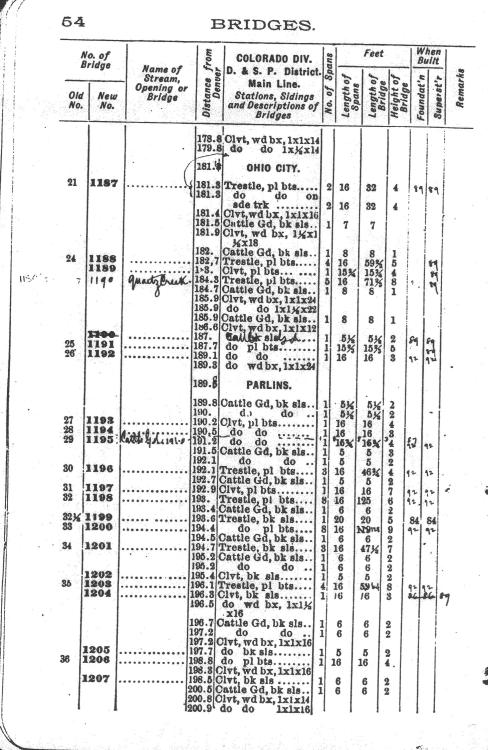 |
Re: Two Railroad Rosters 1886 Pages 55-59
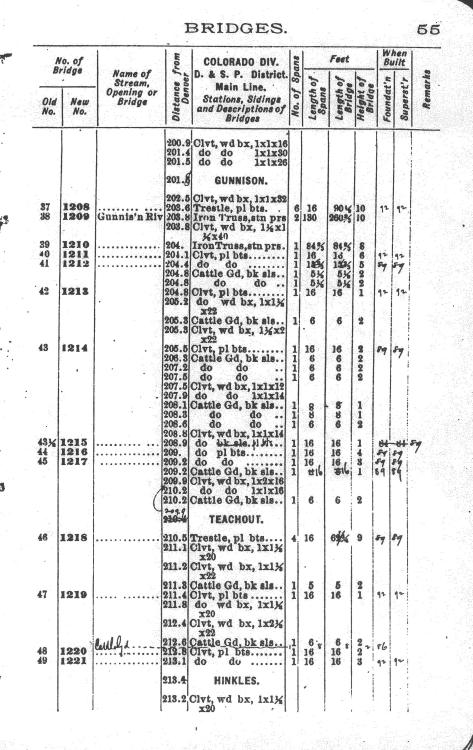 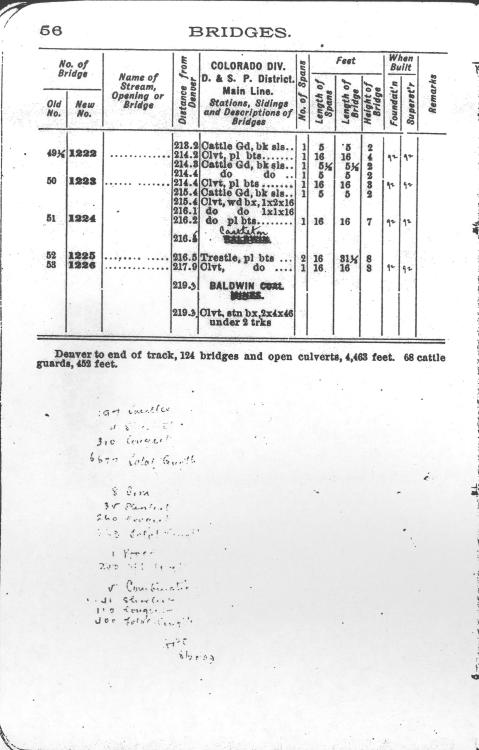 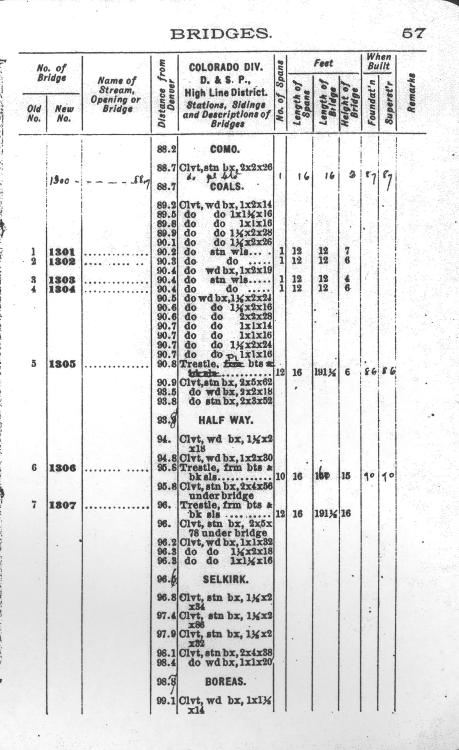 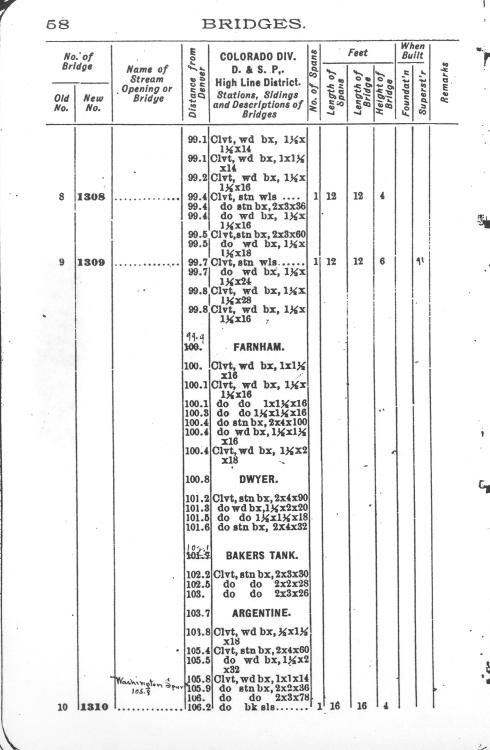 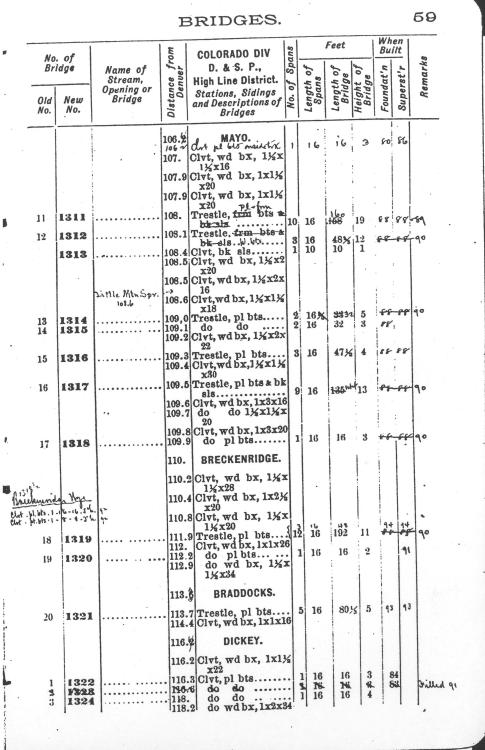
|
Re: Two Railroad Rosters 1886 Pages 60-64
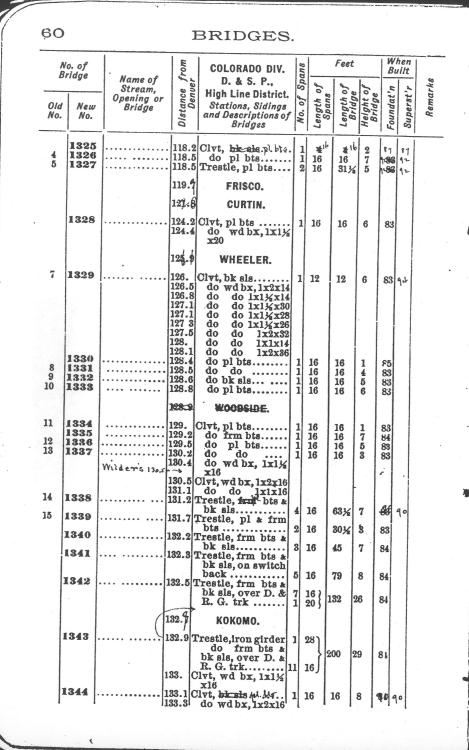 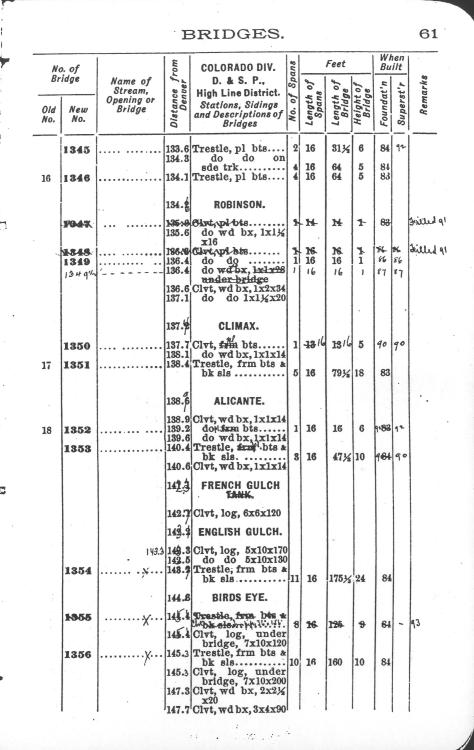 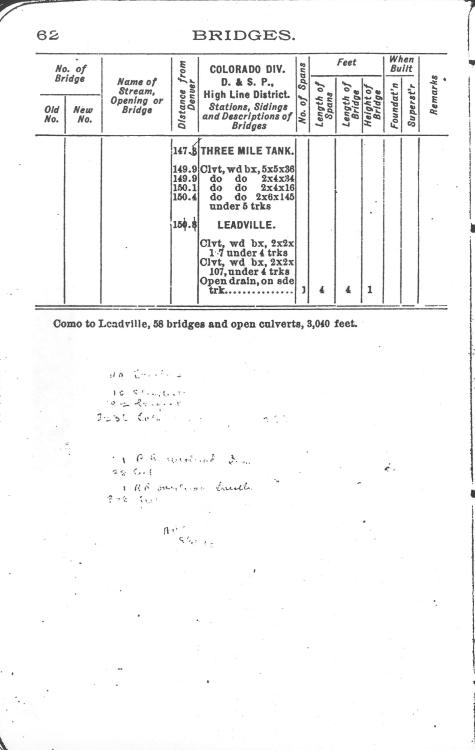 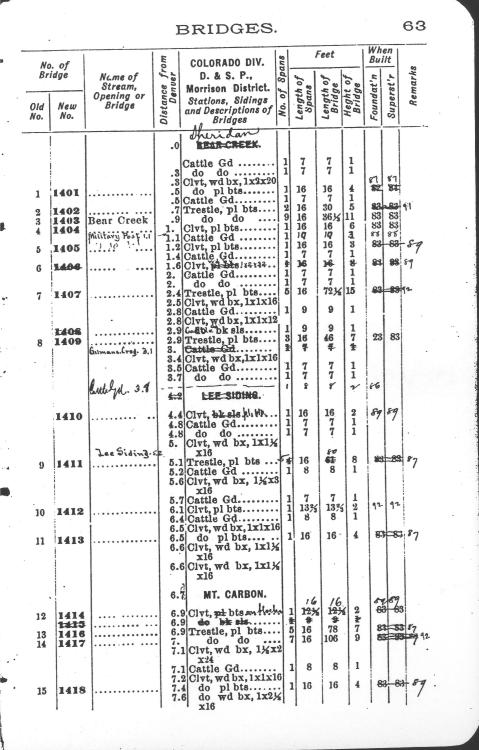 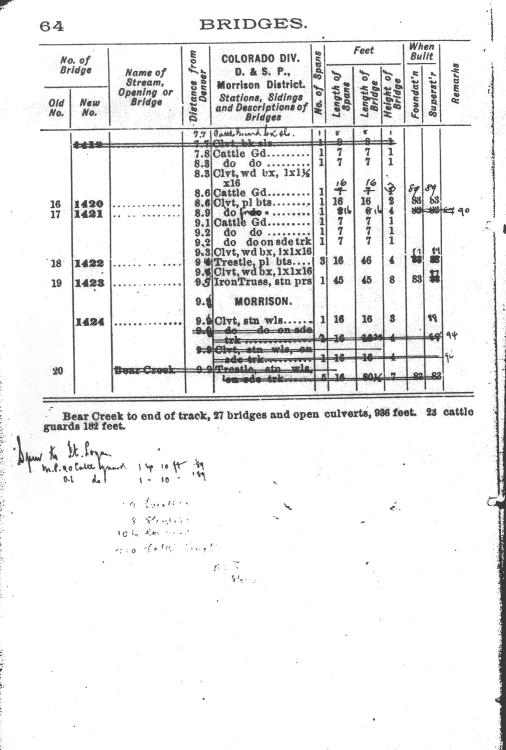
|
Re: Two Railroad Rosters 1886 Pages 65-68
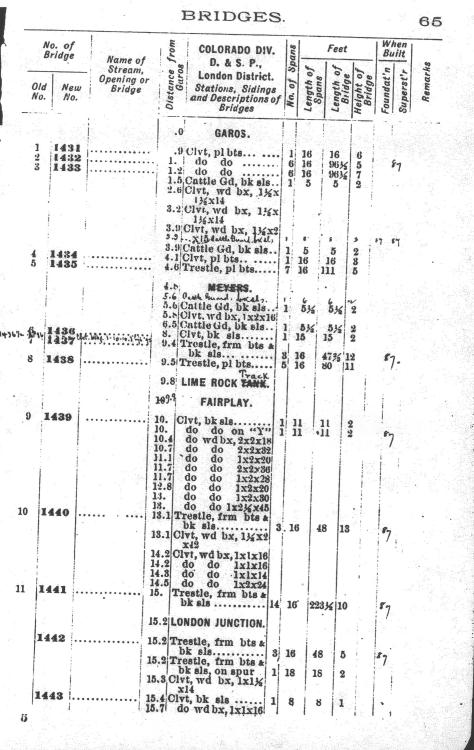 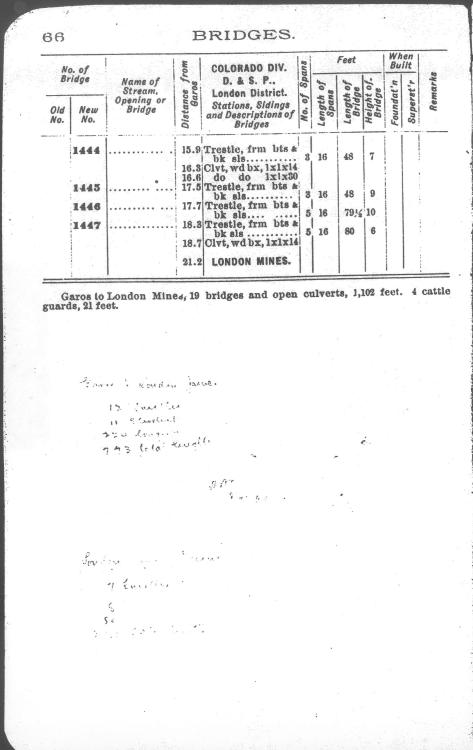 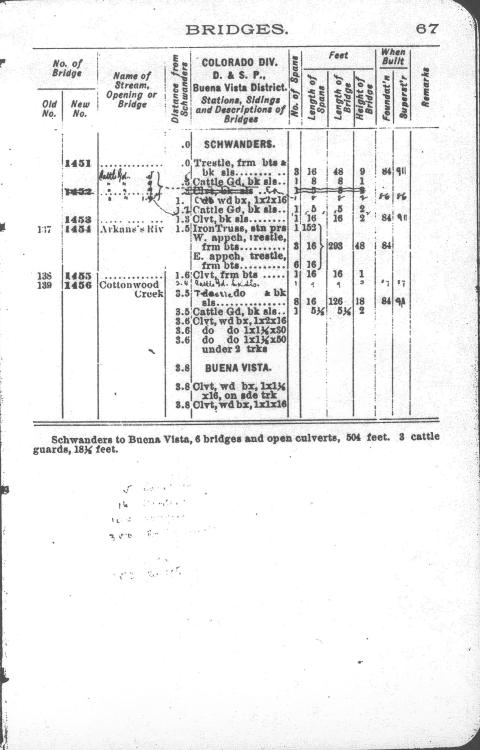 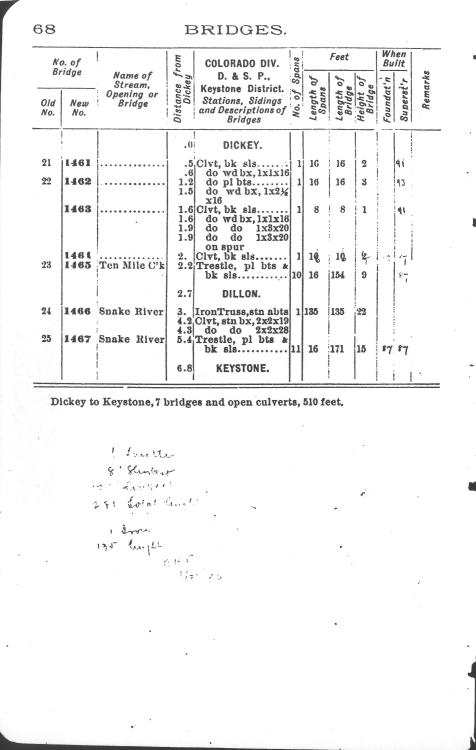
|
Re: Two Railroad Rosters 1886 Pages 118-122
|
In reply to this post by Rick Steele
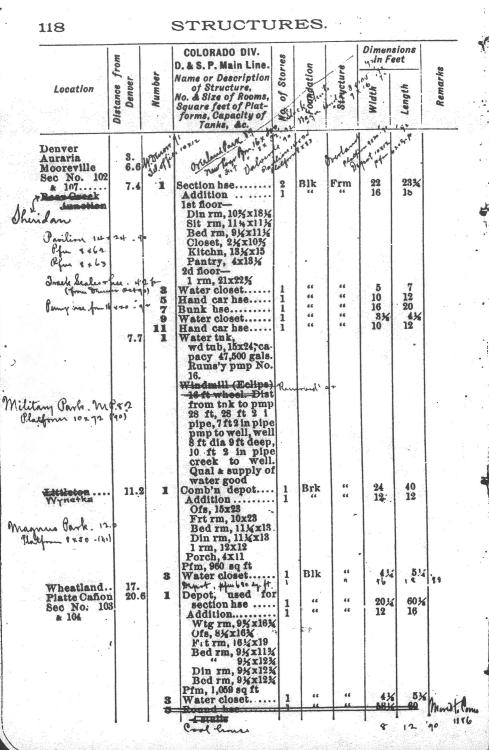 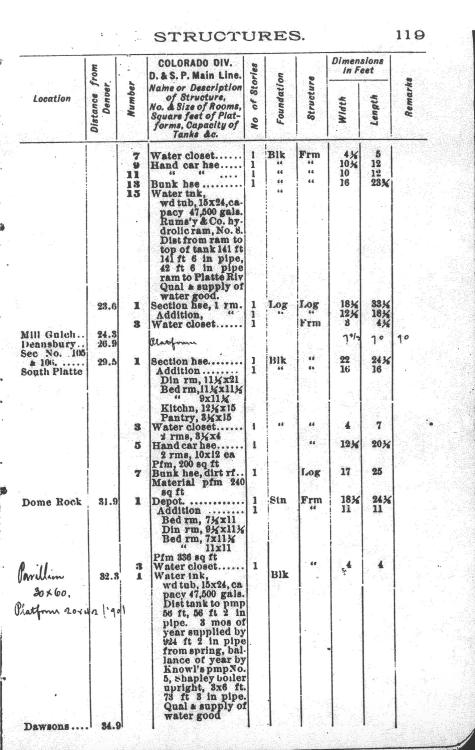 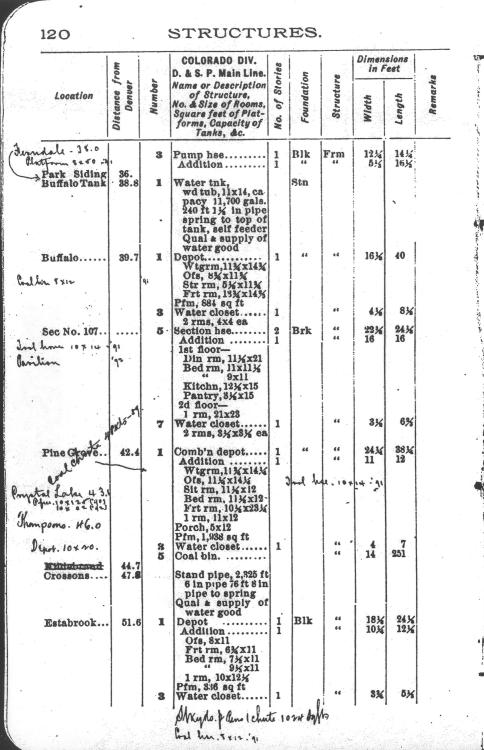 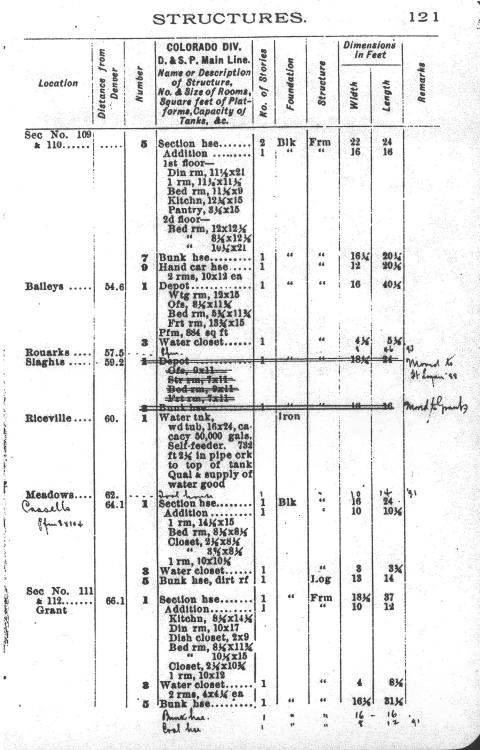 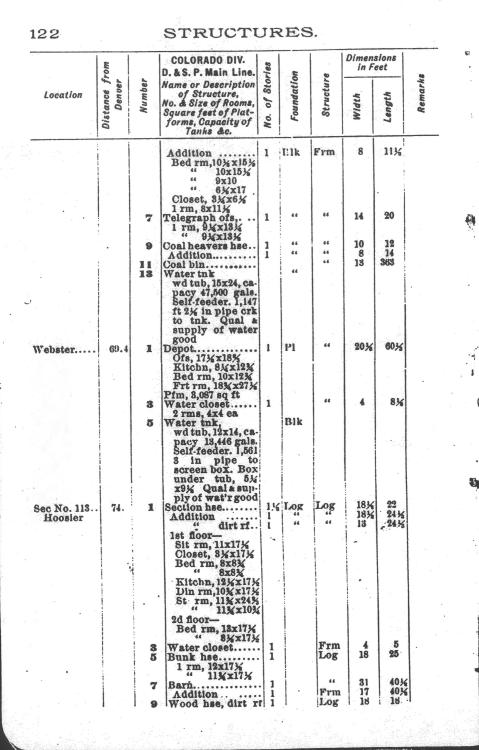
|
Re: Two Railroad Rosters 1886 Pages 123-127
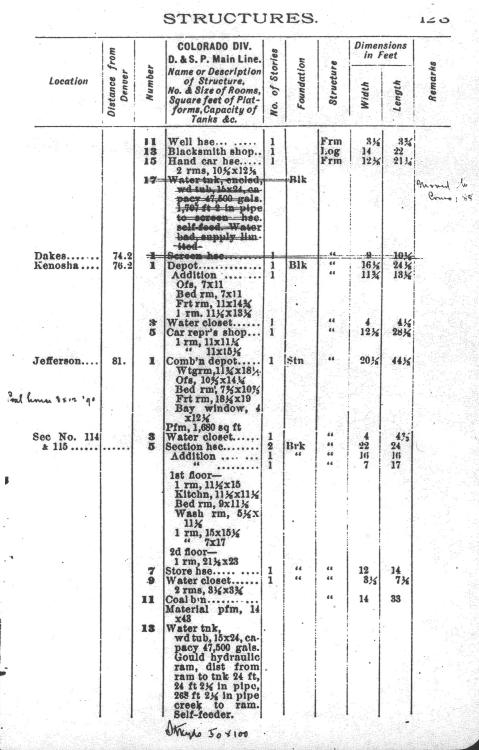 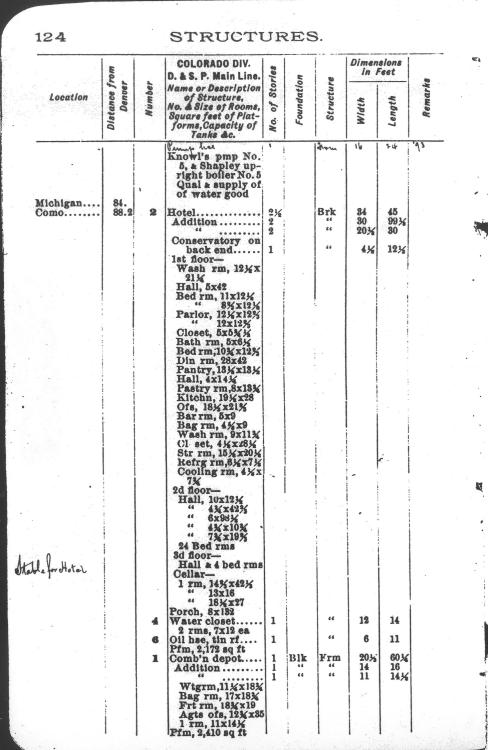 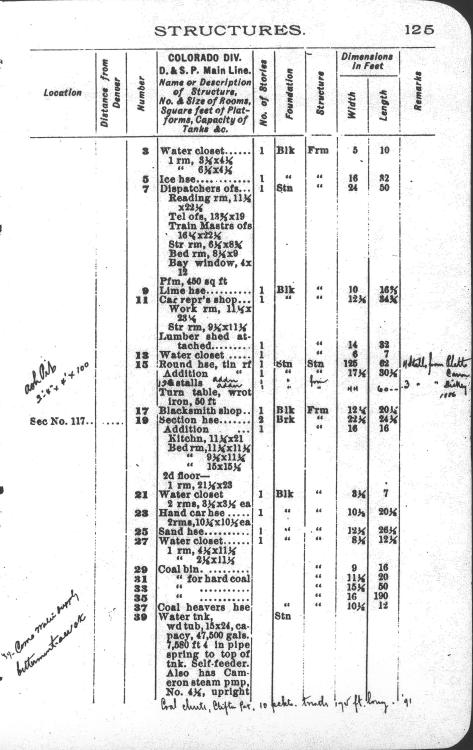 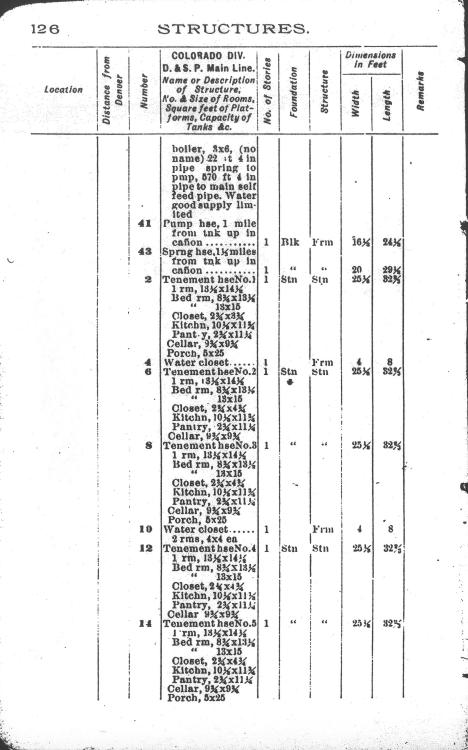 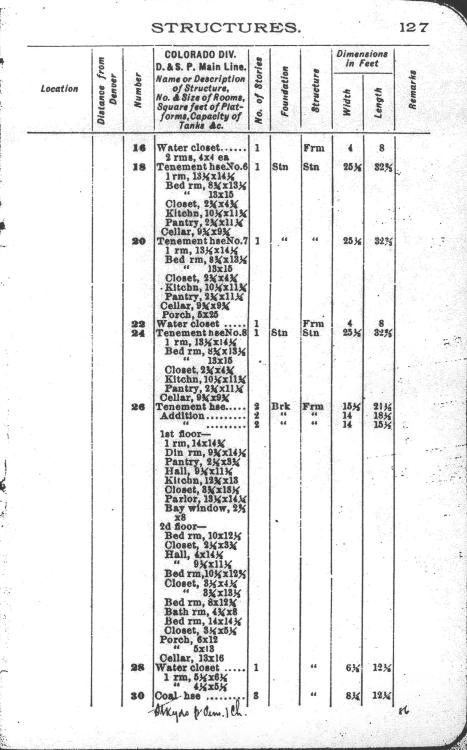
|
|
In reply to this post by Rick Steele
Thanks Rick, this will provide a lot of reading/studying this week.
The post answers Como Depot's question though: At the bottom of page 125, in the 1886 Como structures list, there is a hand written annotation "Coal chute, Clifton Pat., 10 chutes, trestle . . . '91. So it looks like the Como coal chute was in place by 1891, while the aborted coal chutes at Breckenridge were still present, "unfinished" as described in the 1894 book. So the materials from the Breckenridge structure, when taken down, could not have been used on the Como coal chutes. But were the disassembled materials from the Breckenridge structure later used in the construction of the Dickey chutes??
Jim Courtney
Poulsbo, WA |
That's interesting. The patent plate mounted below each chute was from Williams White & Co. in Moline IL. 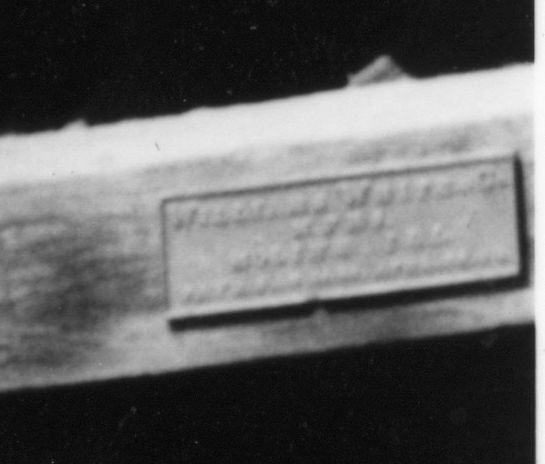 from:  Dave Grandt posted a photo of a similar plate here The plate isn't clear whether the patent belongs to the builder, so I don't know whether the patent was originally by Burnett Clifton and licensed to Williams White, but the Clifton name doesn't show up on the plate. |
|
In reply to this post by Rick Steele
I have seen this report without the annotation and had forgot that Dake and Hoosier were listed, for some reason I had thought they were the same place. I know where Dake was, have walked it, but need to check where the RR had it.
Do we know when the annotations were added, or if not when the latest they could have been added. I see the Water Tank at Hoosier was moved to Como, I assume that was the one south of town. 4 Stalls from Platte Canon, 3 from Dickey in 1886, now that does not quite tie in with the extensions but if we read it as they were taken down and the material was used to build in Como then the actual numbers are not relevant. The Turntable is mentioned as being wrought iron, by 1906 it was in very bad condition to the extent it was described as weak and leaning to one side when an Engine was on it. Took 6 men to turn it and still it could stick. They did try and repair it but to no great effect. There was some discussion of putting in a 60ft Turntable from Pueblo but in the end they replaced it with one they had in the yard in Denver, where that had come from I do not know, described as an old South Park. Seems that the pit walls were rebuilt later which would explain the 1910 date inscribed in the concrete. Even in 1906 they really did not want to spend the money but it had got to the point where they had to. Now of course there could have been a prior replacement but seems unlikely. |
|
In reply to this post by Todd Hackett
Fun little rabbit hole...
https://books.google.com/books?id=gIs5AAAAMAAJ&pg=PA160&lpg=PA160&dq=Burnett+Clifton&source=bl&ots=XKc36AY9J-&sig=ACfU3U0vq4f-KF1USMdNZXOhc4DuaxFv8Q&hl=en&sa=X&ved=2ahUKEwiDo_rHufvkAhXNVt8KHVrhDToQ6AEwBHoECAkQAQ#v=onepage&q=Burnett%20Clifton&f=false Burnett Clifton sold the patents to Williams White & Co. in Moline, which is still there. Mike |
|
This post was updated on .
Let's not get ahead of ourselves here. I still have 30 pages (annotated) to go. Including moving a water tank from Crisman on the GSL&P.
Bye the way, Little Butte was on the line between Pueblo and Falcon, Colorado. Don (aka Como Depot), if you have seen this document, unannotated or annotated, would you please tell me where to find it. The table of contents lists the Bridges and Buildings for the Other UP Ry Colorado Division Lines, including the Mountain Division (Former CC Narrow Gauge Lines), The Fort Collins District (abandoned in 1890 between Fort Collins and Hazard, WY), The Greeley, Salt Lake and Pacific both NG and SG, the Golden, Boulder and Caribou District and the Denver, Western and Pacific. I am working off of a xerox copy supplied to me by a railfan who said that this document had "Disappeared" from the Denver Public Library after the death of Augie Mastrogieuseppi, so any leads to other more complete copies would be appreciated. Rick |
Re: Two Railroad Rosters, 1886
|
Thanks, Rick. Not trying to rush you at all, just pleased you're sharing these details! This is breaking new ground for many of us on the list.
Dave Eggleston
Seattle, WA |
|
Well then let's continue on the main line to Gunnison and Baldwin, shall we?
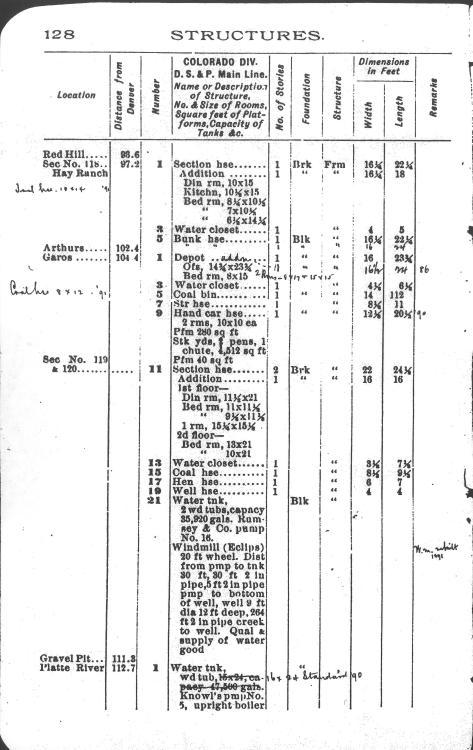 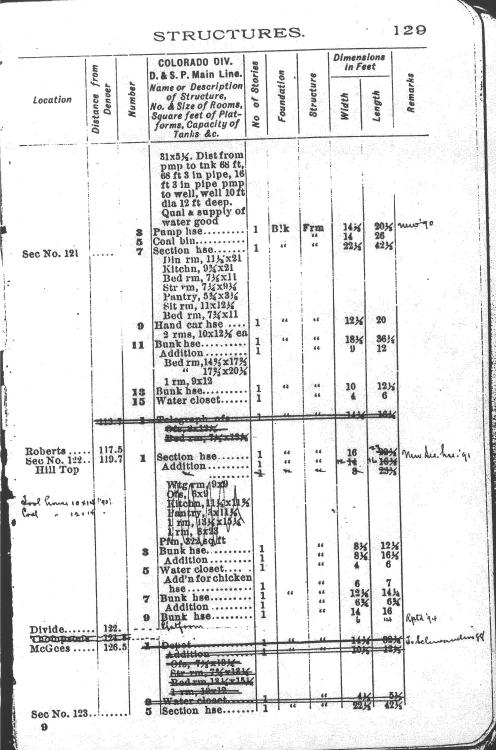 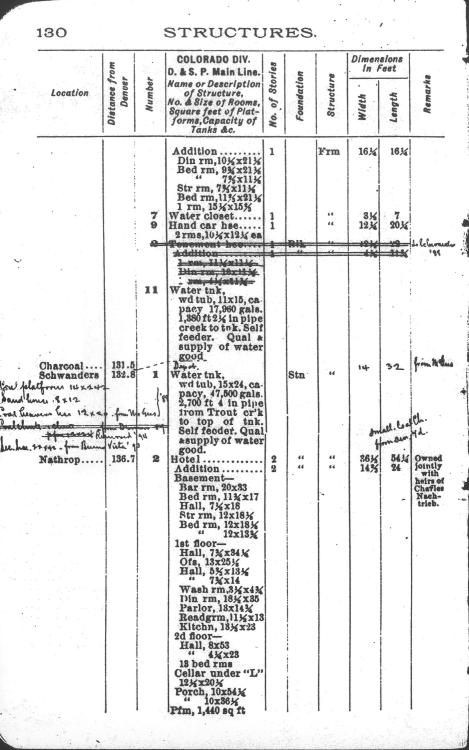 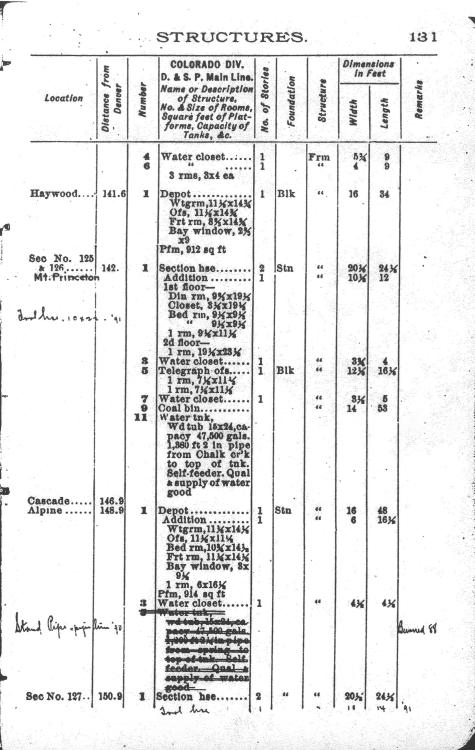 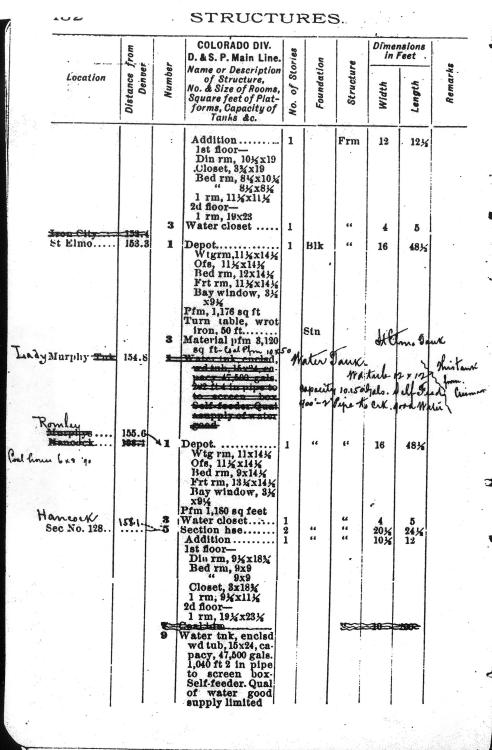
|
|
Now that we've made it to Hancock, lets go through the Alpine Tunnel and on to Baldwin:
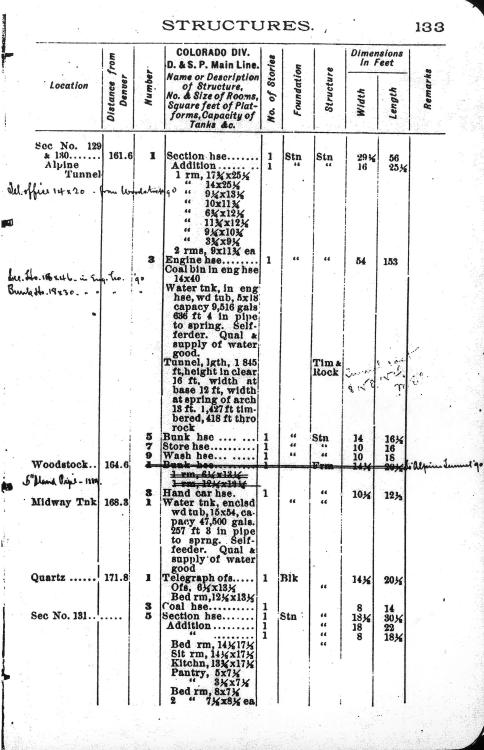 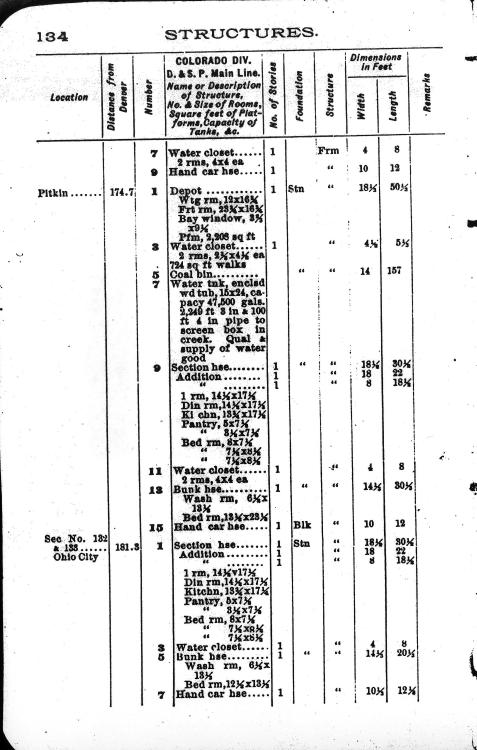 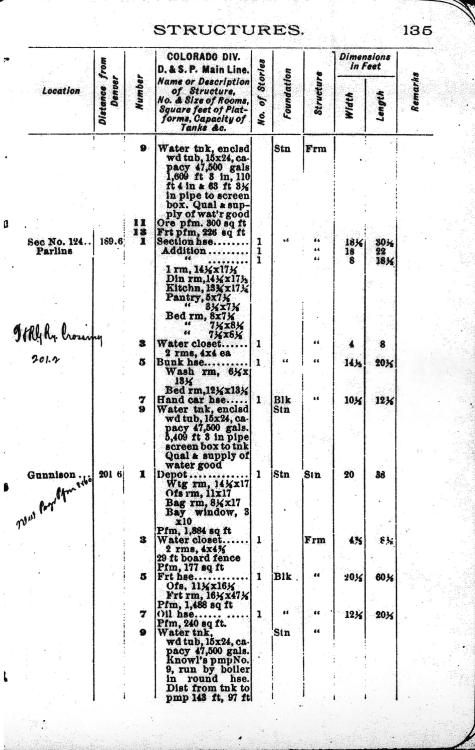 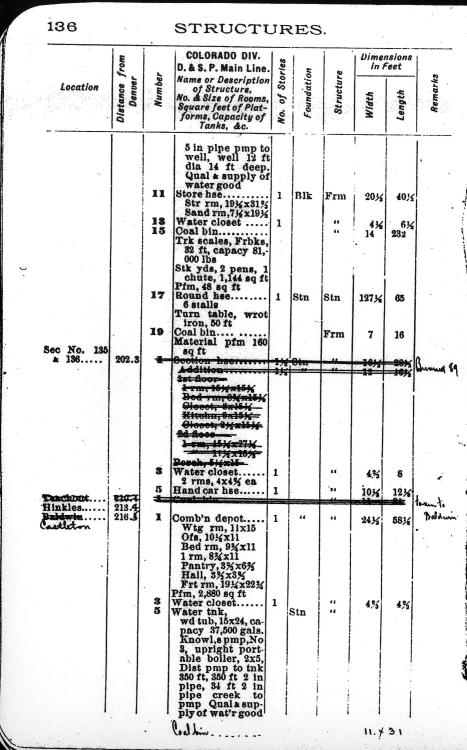 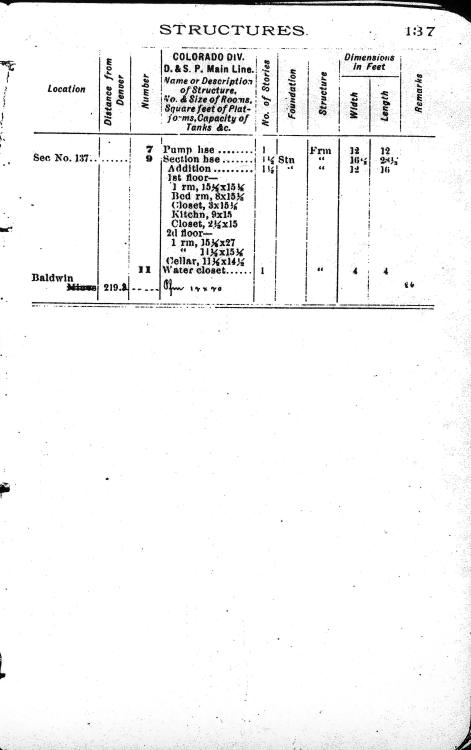
|
|
In reply to this post by Rick Steele
I am not Don, I assume Bob Schoppe gave me a copy but it was a long time ago, maybe 10 years? I just assumed it was out there.
Presumably from a different source as I do not remember the mark ups, so that interested me and of course there were things in it which I had forgotten about or which I did not know were interesting. We used the platform square footage when trying to work out exactly how far to the south the Depot platform went. I remember a long time ago trying to piece together the Pacific Hotel layout from the room dimensions but I could not, well I had to make too many assumptions for it to be valid. Mentions Coals, the junction up to the Upper Mine, and I assume that the track had been pulled up by then as there would have been a culvert or two and one bridge. I assume that ceased operation in 1883 and the track was pulled up but the switch was left in and a few lengths of track, but exactly what happened and when I would not wish to be quoted on. The Lower Mines I doubt would have had anything to mention so perhaps that is why it is not included. The spur would have been present at this time, dates back to December 1879. |
|
This post was updated on .
Sorry to get your name wrong. It's been a long time since we met and I'm not as young as I used to be.
I haven't seen Bob Schoppe for a long time either. As far as your conjecture about the engine houses at Wheatland/Platte Canyon ( 4 stalls) and Dickey (3 stalls) go, the only feasible way to move them to Como by train is to disassemble them. I am sure that the B&B forces reassembled them to fit the radial tracks emanating from the Turntable, otherwise the move would have been an exercise in futility. Be patient on King, that's the name that the DL&G used for the Como Coal mining area. In this document the structures are just called "Como Coal Mines" it's coming up, all of the mining properties were listed at the end of the Structures. Rick |
|
OK, it's time for us to return to Como and go over the High Line. Notice the 8 stall roundhouse in Leadville (after it burned it was later replaced by the existing roundhouse). Also, notice the wholesale dismantlement of the tenements in Leadville in 1889.
The scan of page 142 was the best the I could get, as the copy that I was using was not complete. 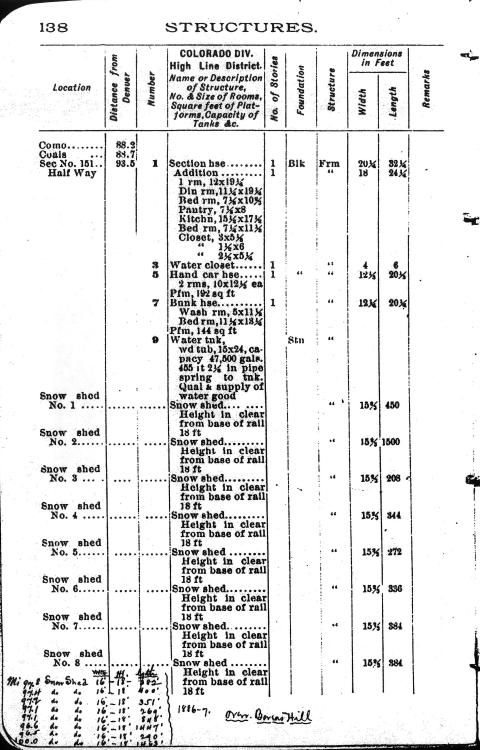 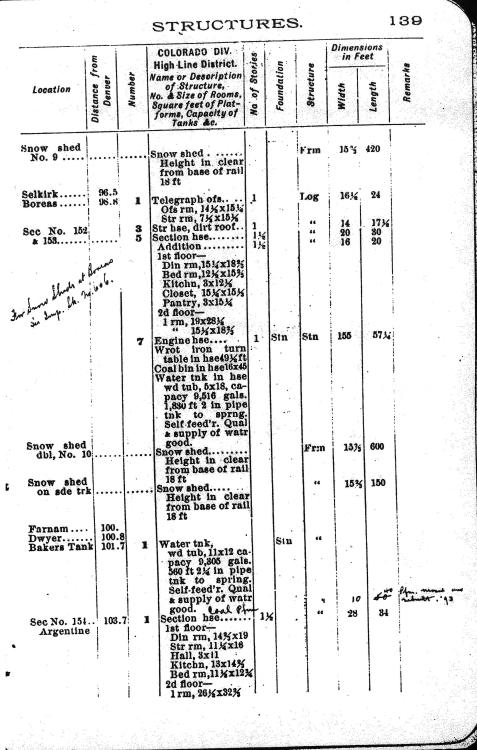 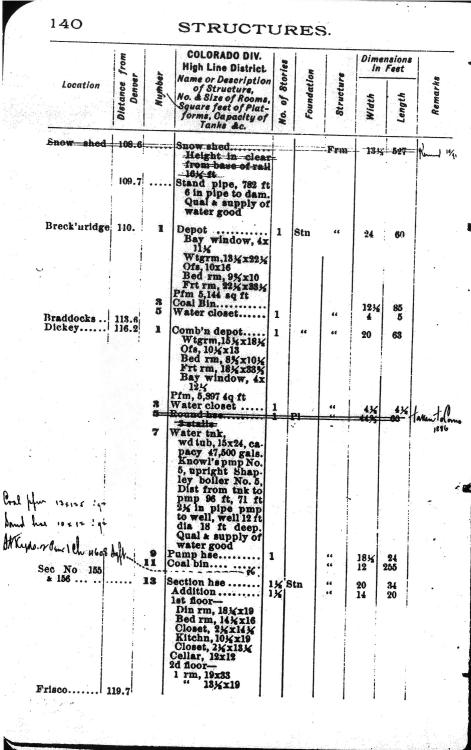 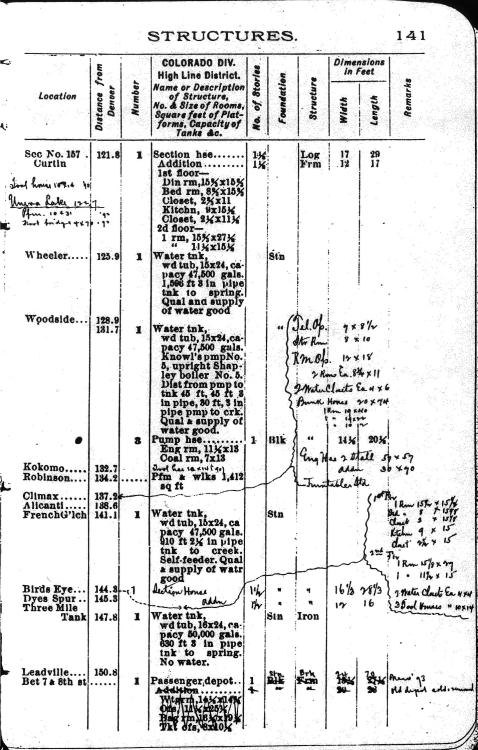 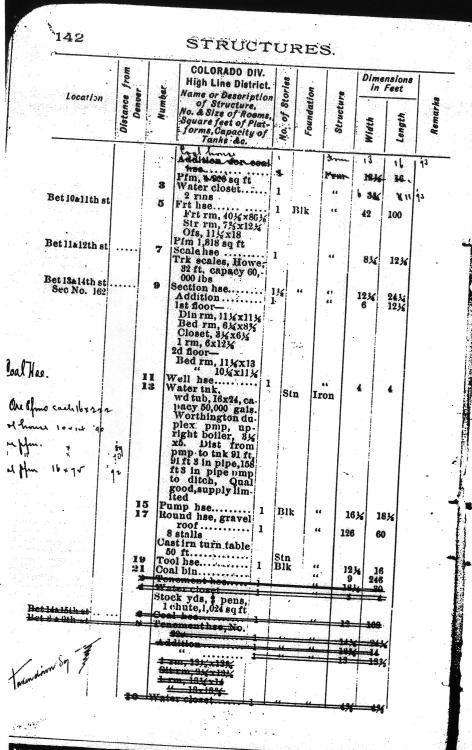 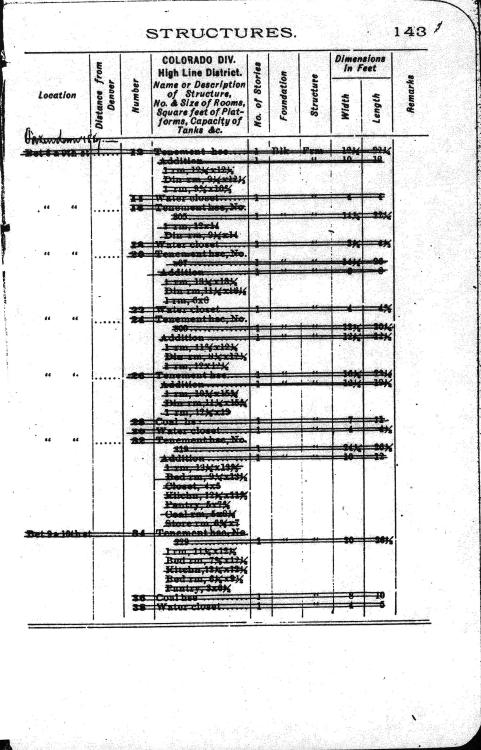 |
|
Now Let's go wander down the branch lines.
First, The Morrison Branch, notice how Miller filled in the missing stations between Sheridan and Lee Siding. Note that the Fort Logan Depot shows moved in from Slaght's. 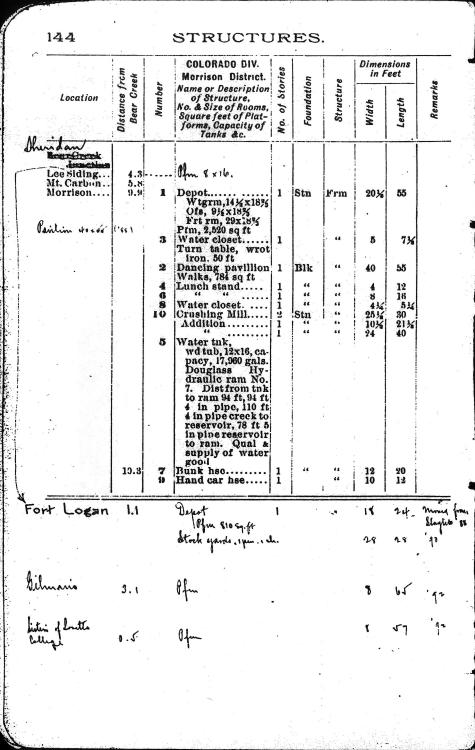 Next it's the London District known to most as the Fairplay Branch. 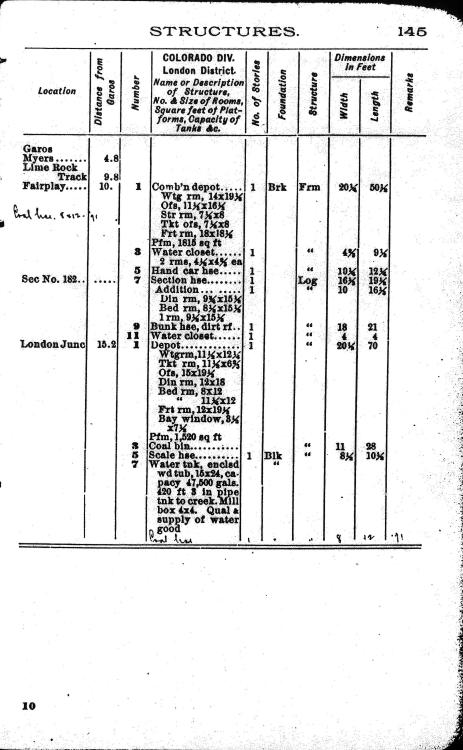 Next, it's the Buena Vista District, showing everything that was sold to the D&RG Ry in 1886, and the handwritten entry for the frame depot in 1891. 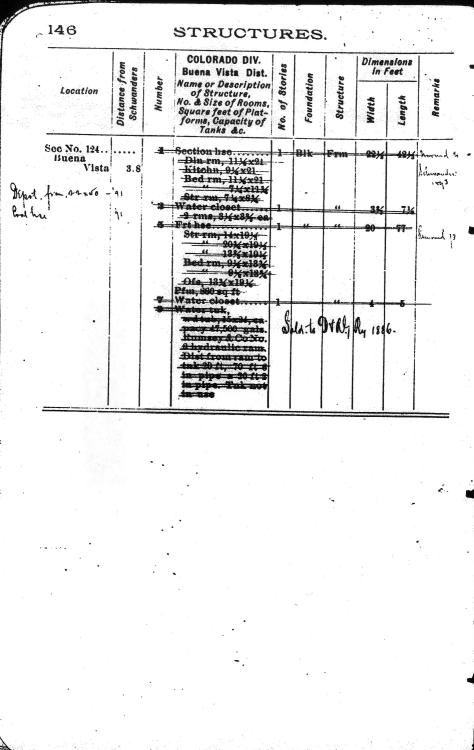 Last covered is the Keystone Branch. 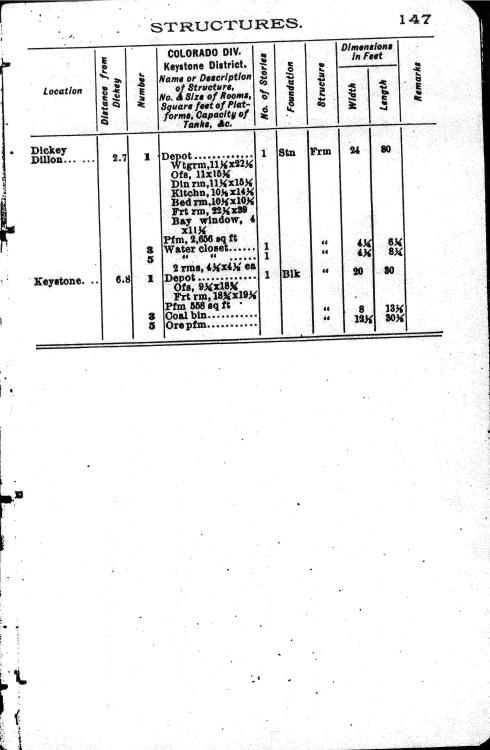
|
|
Now that we're through with the railroad part of the railroad, there are two more areas that are covered.
The first is the Como Mines. Here we see 54 UP Ry owned tenement houses, stables, blacksmith, 1796 gallon water tank, school house, two sets of track scales, etc. 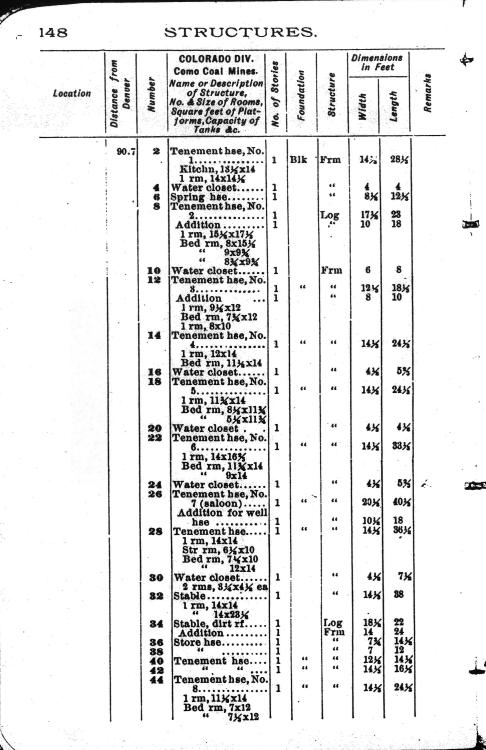 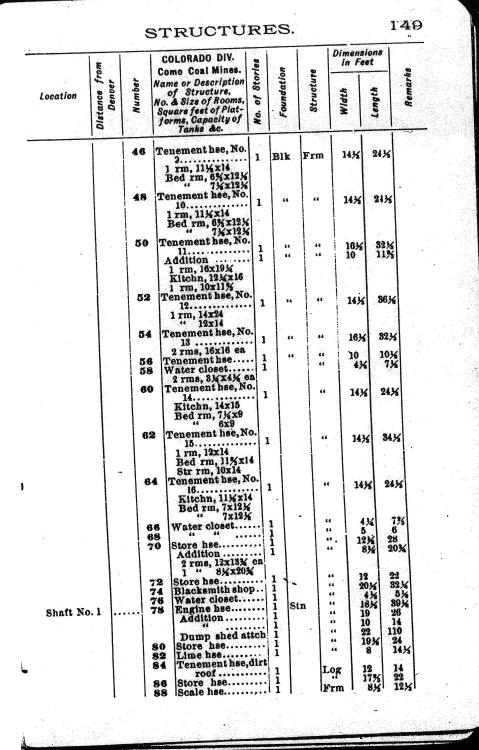 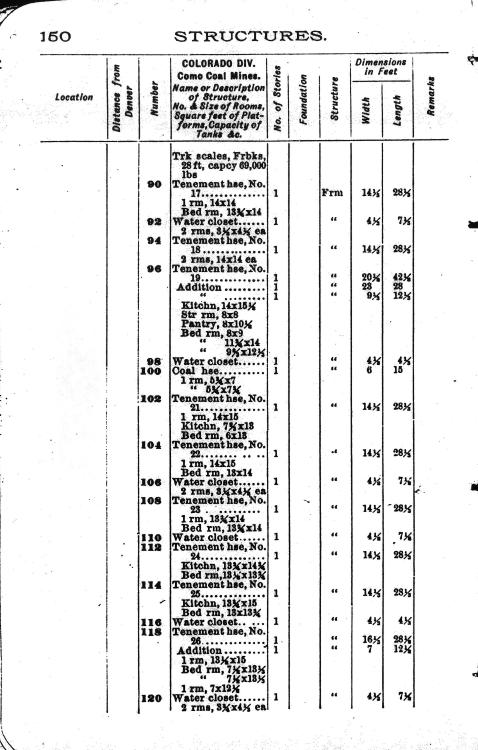 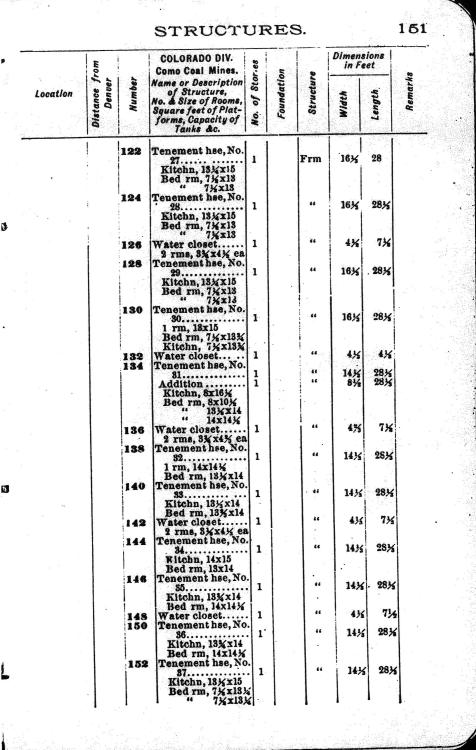 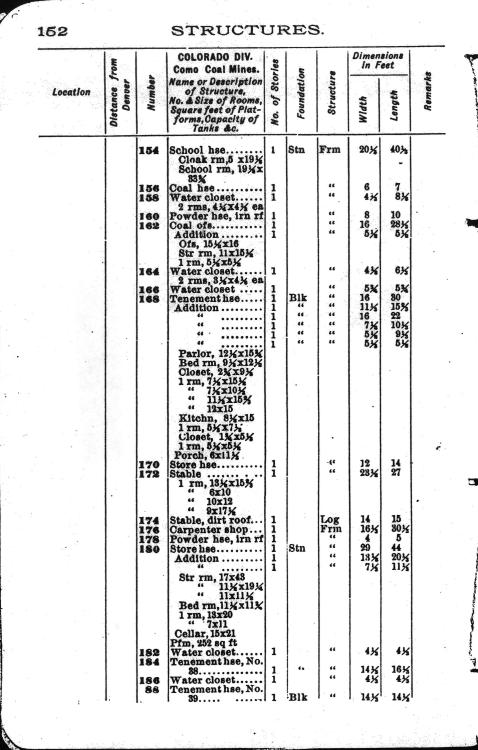 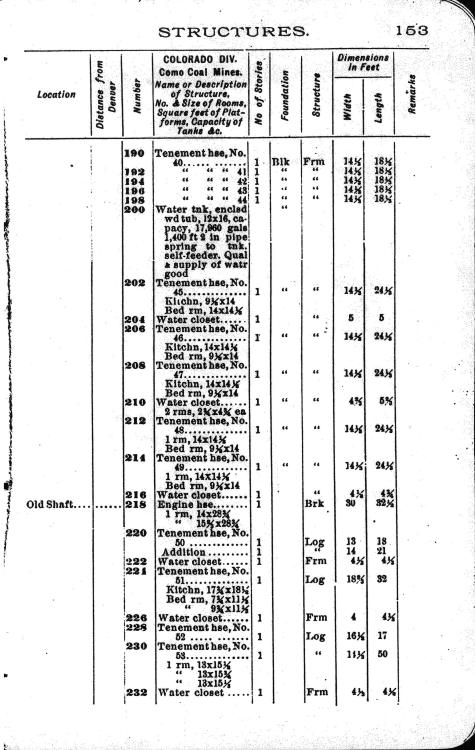 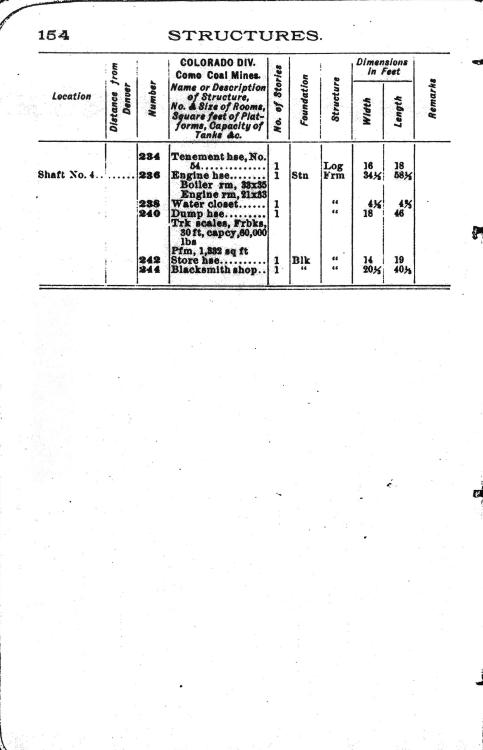
|
|
Well folks, we're at the last Denver & South Park (see how the railroad is addressed in the headings in both the Bridges and Structures Sections) property. It's another company town. Nothing really special except that a number of the 33 listed Tenement Houses are listed as being of log construction.
This is the end of the line, for this book and for the Railroad. It's the Company town of Baldwin. 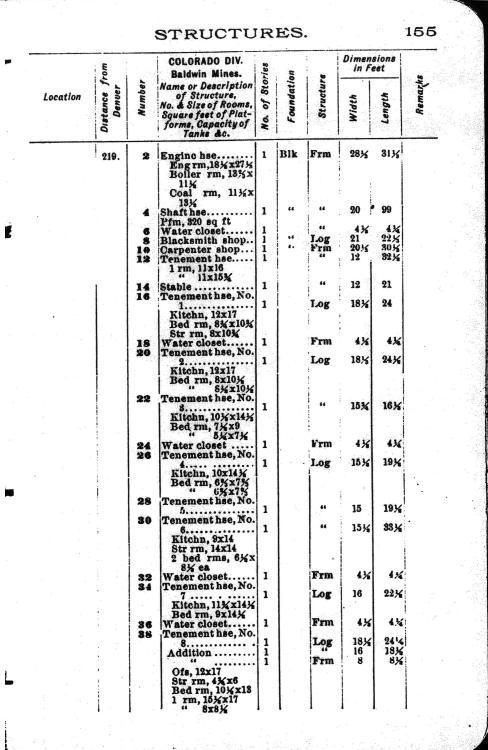 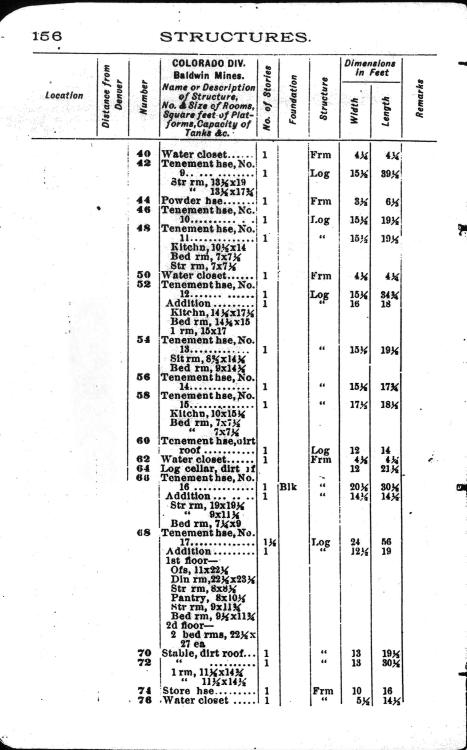 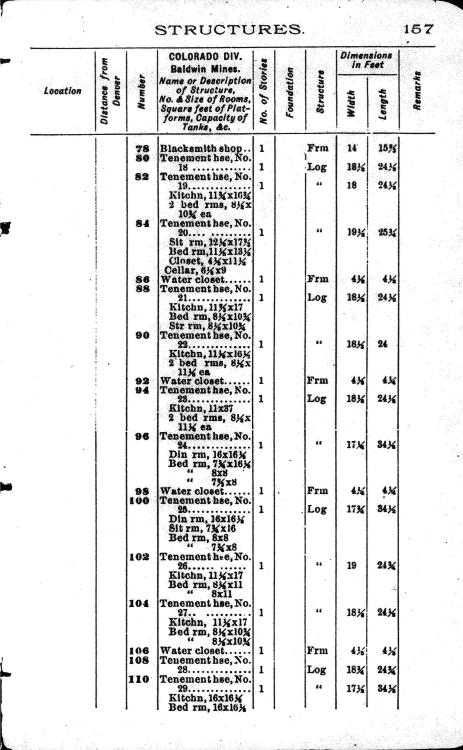 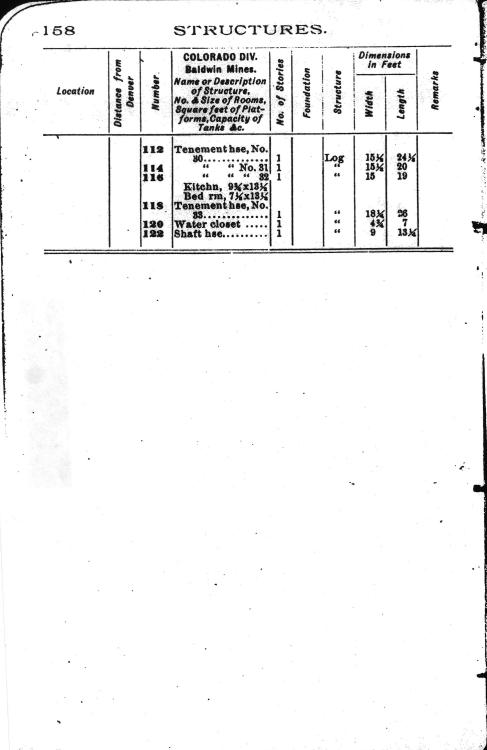 Hope that you have enjoyed this volume. I will work on the 1894 volume as time permits, it needs a lot more cleanup than this one did. I hope that you got some ideas for modeling and realize that a railroad is a fluid and ever changing entity, dealing with fire from cinders or shifting traffic patterns. Personally, I would hate to have been the conductor on a train from Baldwin to Gunnison trying to figure out the train tonnage when the nearest track scales were in Gunnison. I'm sure after enough years on the job that it became second nature to them. There are a couple of places where these books fly in the place of published manuscripts. The biggest one that I noticed was that both Haywood Hot Springs AND Mount Princeton had depots. It is fun to see the notations about the Woodstock telegraph office being moved to Alpine Tunnel and the Sherrod Telegraph office being moved to Ohio City. Remember when reading about these coal towns that an Engine House as listed might very well have housed an engine handling the winch going down into the mines and not a place to keep locomotives. Thanks for reading. Rick |
«
Return to C&Sng Discussion Forum
|
1 view|%1 views
| Free forum by Nabble | Edit this page |

